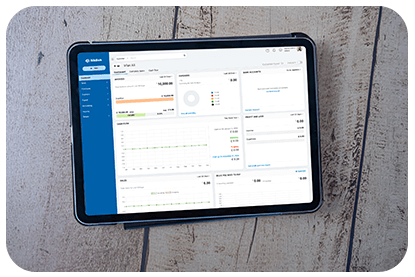19 April 2024
Data Analytics for Business: Unlocking Insights to Drive Growth
As businesses strive to maintain a competitive edge and foster growth, data analytics has emerged as a critical tool. By tapping into the vast amounts of data available, companies can uncover valuable insights into customer preferences, industry trends, and internal processes. But how can businesses leverage data analytics to achieve success?
This article delves into the significance of data analytics for business and explores how it can unlock insights that propel growth and innovation.
What is Data Analytics for Business?
Data analytics refers to the process of examining raw data to uncover trends, patterns, and correlations. For businesses, it involves transforming large sets of data into actionable insights that can improve decision-making, optimize processes, and enhance customer experiences.
Business data analytics typically covers areas like financial performance, customer behavior, marketing effectiveness, and supply chain management.
By analyzing business data, companies can make data-driven decisions that are more accurate and efficient, reducing the reliance on gut feeling or guesswork. From sales data to customer feedback, data analytics empowers businesses to make informed decisions that drive long-term growth and success.
Key Benefits of Data Analytics for Business
1. Improved Decision Making
One of the primary advantages of data analytics is its ability to inform better decision-making. Utilizing data insights allows businesses to make decisions grounded in facts and evidence, rather than relying on guesswork or intuition. This leads to more strategic and informed choices that can positively impact the bottom line.
2. Enhanced Customer Insights
Data analytics provides valuable information about customer preferences, behaviors, and buying patterns. By analyzing customer data, businesses can tailor their products, services, and marketing strategies to meet the specific needs of their target audience. This helps improve customer satisfaction and loyalty, ultimately driving growth.
3. Optimized Operations
Through the use of data analytics, businesses can identify inefficiencies in their operations. By analyzing workflow data, inventory levels, and production processes, companies can find areas where they can cut costs, improve productivity, and streamline operations. This leads to greater operational efficiency and higher profit margins.
4. Identifying Market Trends
Data analytics lets businesses spot emerging trends early, gaining a competitive edge before they become mainstream. By analyzing data on consumer behavior, industry trends, and competitor activities, companies can identify new opportunities for growth and innovation. This allows them to stay ahead of the curve and seize market opportunities at the right time.
5. Risk Management
Data analytics also plays a crucial role in identifying and managing risks. By analyzing historical data and predictive models, businesses can assess potential risks in areas like finance, supply chain, and market volatility. This helps them develop strategies to mitigate risks and make more resilient business decisions.
How to Implement Data Analytics in Your Business
1. Define Clear Objectives
Before diving into data analytics, it’s essential to define clear objectives. What do you want to achieve through data analysis? Want to boost sales, enhance customer loyalty, or optimize operations? By setting clear goals, you can focus your efforts on the data that matters most and ensure that the insights gained are aligned with your business objectives.
2. Collect and Organize Data
Data is only useful if it is accurate, clean, and well-organized. Businesses should focus on gathering data from various sources such as customer interactions, financial transactions, and supply chain operations. Once collected, it’s crucial to organize this data in a way that makes it easy to analyze. Data management tools and platforms can help streamline this process.
There are a variety of data analytics tools available to businesses, ranging from basic Excel spreadsheets to advanced artificial intelligence (AI)-powered analytics platforms. Choosing the right tools depends on the complexity of your business’s needs. For example, smaller businesses may start with simpler tools, while larger organizations might benefit from more sophisticated software with predictive analytics capabilities.
4. Analyze and Interpret Data
Once the data is collected and organized, it’s time to start analyzing it. This is where data analytics truly makes a difference. By using statistical models, algorithms, and visualization tools, businesses can gain valuable insights from their data. Interpretation is key raw data alone won’t drive business success, but the insights derived from that data will.
5. Make Data-Driven Decisions
The ultimate goal of data analytics for business is to use the insights gained to make informed decisions. Whether it’s launching a targeted marketing campaign, optimizing the supply chain, or adjusting product offerings, businesses should use the insights from their data analysis to guide their strategies. This approach ensures that decisions are grounded in evidence, leading to better outcomes.
The Future of Data Analytics in Business
As technology evolves, data analytics becomes more powerful. With AI, machine learning, and big data, businesses can gain sharper insights to drive growth, enhance personalization, and maintain a competitive edge.
Read More About: How Much to Charge for Bookkeeping Services: A Pricing Guide
Conclusion
In the modern business world, data analytics is no longer a luxury it’s a necessity. By unlocking insights from data, businesses can improve decision-making, enhance customer experiences, optimize operations, and identify new opportunities for growth. As the field continues to evolve, companies that embrace data analytics for business will be better positioned to succeed in an increasingly competitive marketplace.




